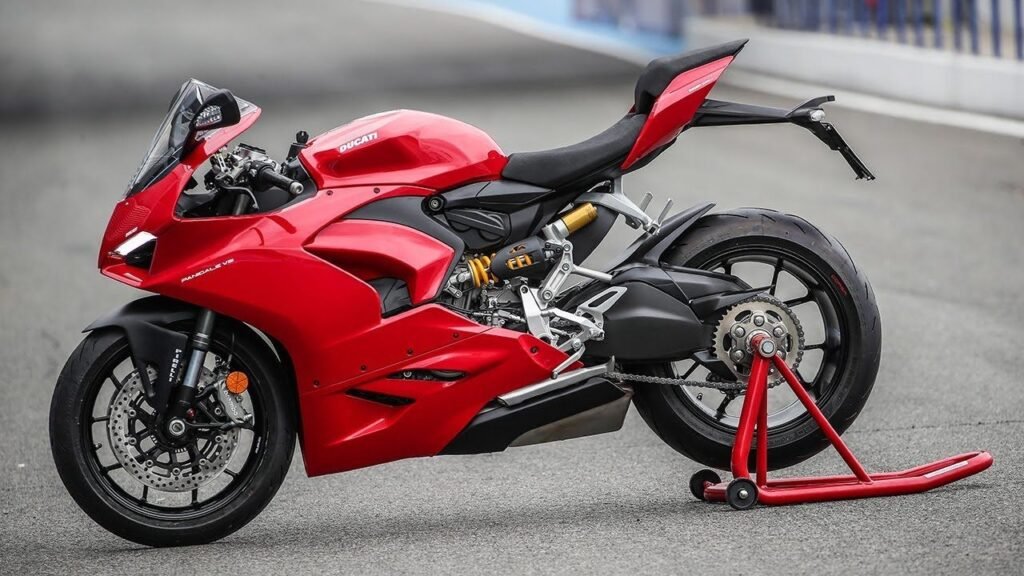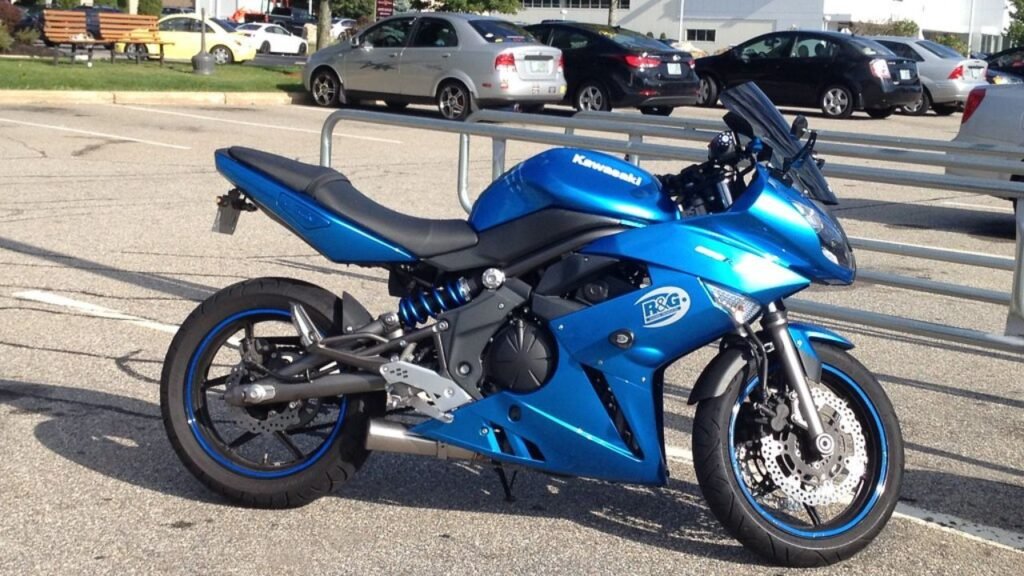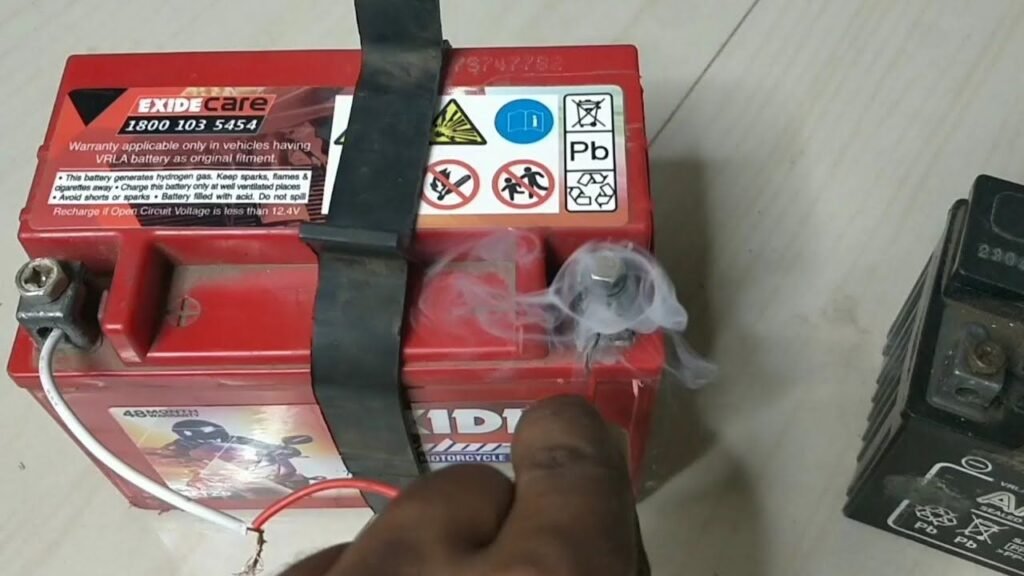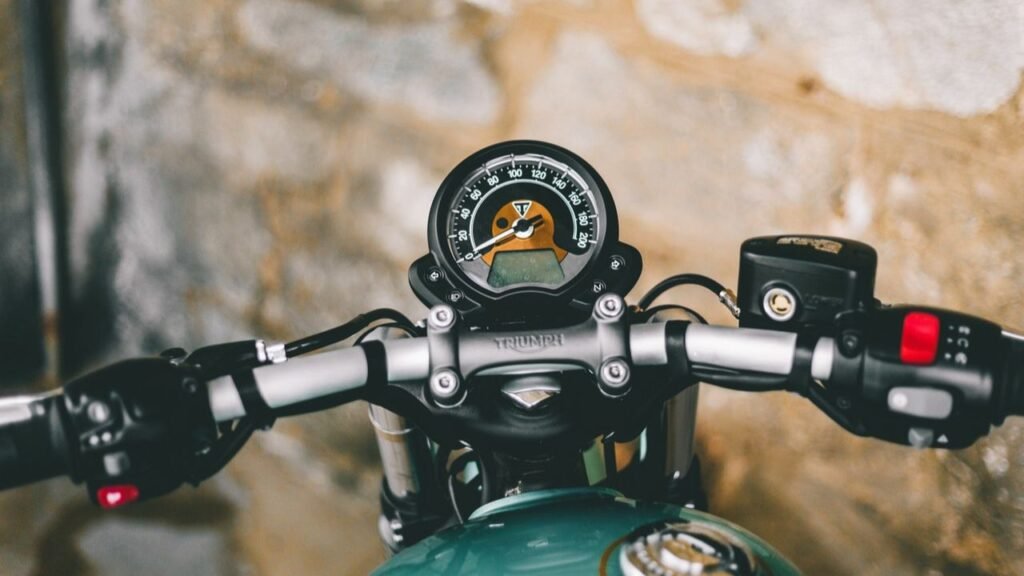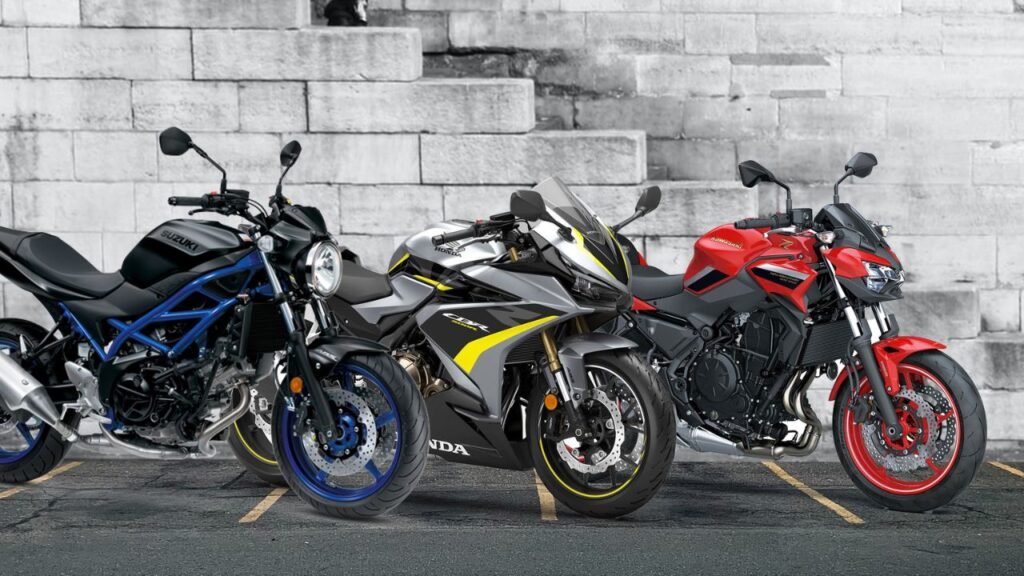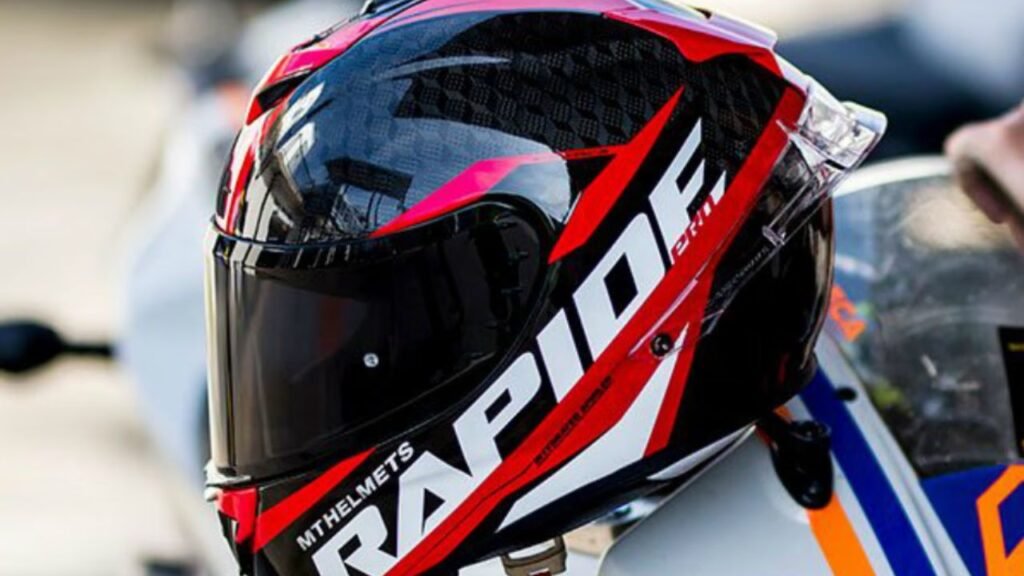Blog
How To Jump Start A Motorcycle

Jump-starting a motorcycle is an essential skill for every rider. How to jump-start a motorcycle. Knowing how to do it safely can save time and prevent being stranded in inconvenient or unsafe situations. Motorcycles, like cars, rely on a battery to power the ignition and electrical systems. A dead battery is one of the most common reasons a bike won’t start. How to jump start a motorcycle, often caused by leaving lights on, long periods of inactivity, cold weather, or a failing battery. Understanding the jump-starting process ensures you can revive your motorcycle quickly without causing damage to the battery, electrical system, or yourself. The procedure involves using either a second motorcycle or a vehicle with a compatible battery, along with jumper cables, to transfer power. While the concept is straightforward, attention to safety, correct cable connections, and proper steps is crucial. This guide provides a clear overview to help riders confidently jump-start their motorcycles when needed.
Understanding Motorcycle Batteries
How to jump-start a motorcycle. A motorcycle battery is essential for starting the engine and powering electrical components, such as lights, indicators, and ignition systems. Understanding the types of batteries, recognizing signs of failure, how to jump-start a motorcycle, and following safety precautions is crucial for safe and effective jump-starting.
A. Types of Motorcycle Batteries
How to jump-start a motorcycle. Motorcycle batteries generally fall into two main categories: lead-acid batteries and lithium-ion batteries.
- Lead-Acid Batteries: These are the most common type used in motorcycles. They are relatively inexpensive, reliable, and capable of providing consistent power. Lead-acid batteries can be either conventional (flooded) or maintenance-free (sealed). Conventional lead-acid batteries require periodic checking and topping up of electrolyte levels, while sealed batteries are designed to be maintenance-free. Despite their reliability, lead-acid batteries are heavier and have a shorter lifespan compared to lithium-ion batteries. They can also be prone to sulfation, which reduces their effectiveness over time.
- Lithium-Ion Batteries: These are a newer technology in the motorcycle world. Lithium-ion batteries are lightweight, compact, and provide high energy density. They also tend to have a longer lifespan and maintain a more consistent voltage output, which helps improve engine performance. However, they are more expensive and sensitive to extreme temperatures. Overcharging or deep discharging can permanently damage a lithium-ion battery, making proper handling essential.
B. Signs of a Failing Battery
Recognizing a failing battery before it completely dies can prevent inconvenient breakdowns. How to jump-start a motorcycle. Common signs include slow engine cranking, dim headlights, and flickering dashboard lights. If a battery frequently requires jump-starting, struggles to hold a charge, or shows visible corrosion around terminals, it is likely nearing the end of its service life. Swollen battery cases or unusual odors are also warning signs that replacement is needed immediately.
C. Safety Precautions Before Jump Starting
How to jump-start a motorcycle. Jump-starting a motorcycle involves dealing with electrical currents, so safety is paramount. Always wear protective gloves and eyewear to prevent injury from sparks or acid leaks. Ensure the motorcycle is turned off and in neutral before connecting jumper cables. Verify the polarity of the battery terminals—connecting positive to positive and negative to negative—to avoid short circuits or battery damage. Never lean directly over the battery while jump-starting, and avoid touching the clamps together. If the battery is cracked, leaking, or excessively corroded, do not attempt a jump start, as this can cause serious harm or damage to the electrical system.
Understanding these aspects of motorcycle batteries ensures not only effective jump-starting but also long-term battery health and rider safety.
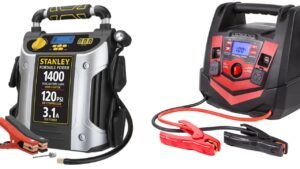
Tools and Equipment Needed
Proper tools and equipment are crucial when jump-starting a motorcycle. Using the right items ensures safety, prevents damage to the motorcycle’s electrical system, How to jump start a motorcycle and increases the chances of a successful start. Below are the essential and optional tools every rider should have.
A. Jumper Cables
Jumper cables are the most basic and essential tool for jump-starting a motorcycle using another vehicle. High-quality cables with thick, insulated wires and strong clamps ensure efficient power transfer from the donor battery to the motorcycle battery. Look for cables that are long enough to reach between vehicles safely, typically around 10–12 feet. Proper insulation prevents accidental short circuits or shocks during the jump-starting process. Always check cables for frays or exposed wires before use, as damaged cables can be dangerous.
B. A Functioning Vehicle or a Jump Starter
To provide the necessary electrical charge, you need a functioning vehicle with a healthy 12-volt battery or a dedicated portable jump starter. If using a car or another motorcycle, ensure the donor battery is fully charged and in good condition. Avoid using vehicles with higher voltage systems, like trucks with 24-volt batteries, as they can damage a motorcycle’s electrical components. Portable jump starters are a convenient alternative, especially for riders who travel alone. Modern jump starters often include built-in safety features like reverse polarity protection and overcurrent protection, making them ideal for safe and quick use.
C. Safety Gear (Gloves, Goggles)
How to jump-start a motorcycle. Safety is paramount when working with batteries. Always wear protective gloves to shield your hands from acid leaks and sparks. Goggles or safety glasses protect your eyes from potential battery acid splashes. Long sleeves and sturdy clothing further reduce the risk of injury. Even with proper handling, sparks can occur when connecting or disconnecting cables, so protective gear is not optional—it is essential.
D. Optional: Multimeter for Battery Testing
A multimeter is a useful tool for checking a motorcycle battery’s voltage and diagnosing potential issues. Measuring the battery before attempting a jump start helps determine whether the battery is truly dead or if other electrical problems exist. A fully charged 12-volt battery typically shows around 12.6 volts, while readings below 12 volts indicate a weak battery. Using a multimeter can prevent unnecessary jump-start attempts and provide insight into whether a battery needs replacement.
Having the right combination of tools and safety equipment ensures that jump-starting a motorcycle is efficient, safe, and stress-free. Preparedness can make the difference between a quick start and an accident or damage to the bike’s electrical system.
Step-by-Step Guide: How to jump-start a motorcycle
Jump-starting a motorcycle requires careful attention to detail to ensure safety and prevent damage to the bike’s electrical system. Following the proper steps helps avoid accidents, sparks, or battery damage. Below is a comprehensive guide for jump-starting a motorcycle safely.
A. Preparing the Vehicles
1. Positioning the Vehicles:
How to jump-start a motorcycle. If using another vehicle as a power source, park it close enough so the jumper cables can comfortably reach both batteries, but make sure the vehicles do not touch. For motorcycles, keep them in neutral with the kickstand down, and ensure both vehicles are on a stable surface to prevent tipping.
2. Turning Off All Electrical Components:
Before connecting the jumper cables, switch off all electrical components, including headlights, indicators, radios, and ignition. This prevents potential voltage spikes that could damage either battery or the motorcycle’s sensitive electronics.
B. Connecting the Jumper Cables
1. Correct Order of Connections:
How to jump-start a motorcycle. Proper connection order is crucial to avoid sparks or short circuits. Begin by connecting the red (positive) clamp to the positive terminal of the dead motorcycle battery. Next, attach the other red clamp to the positive terminal of the donor battery. Then, connect the black (negative) clamp to the negative terminal of the donor battery. Finally, attach the remaining black clamp to an unpainted metal part of the motorcycle frame, away from the battery. This grounding step reduces the risk of sparks near the battery.
2. Ensuring Secure Connections:
Make sure all clamps are firmly attached and not loose. Loose connections can result in inefficient power transfer or sparks. Double-check that the clamps are not touching each other or any other metal parts of the vehicles.
C. Starting the Motorcycle
1. Starting the Donor Vehicle:
How to jump-start a motorcycle: Start the donor vehicle and let it idle for a few minutes. This allows the battery to deliver a steady charge to the motorcycle battery, helping it gain enough power for ignition.
2. Attempting to Start the Motorcycle:
With the donor vehicle running, attempt to start the motorcycle. Do not hold the starter continuously for more than a few seconds at a time to avoid damaging the starter motor. If the motorcycle does not start after 3–5 attempts, wait a few minutes before trying again. Once the motorcycle starts, allow it to idle to stabilize the electrical system.
D. Disconnecting the Cables
1. Proper Order for Disconnection:
After the motorcycle is running, disconnect the cables in reverse order of connection. Start with the black clamp attached to the motorcycle frame, then the black clamp on the donor battery. Next, remove the red clamp from the donor battery, and finally, the red clamp from the motorcycle battery.
2. Final Checks on the Motorcycle:
Check the motorcycle’s lights, indicators, and horn to ensure the electrical system is functioning correctly. Allow the engine to run for a few minutes to recharge the battery. If the motorcycle fails to start again after turning off, the battery may need replacement or further inspection.
How to jump-start a motorcycle. By carefully following these steps, riders can safely jump-start a motorcycle while minimizing risks and ensuring the battery receives an appropriate charge for reliable performance.
How to Jump-Start a Motorcycle Without Cables
How to jump-start a motorcycle. Jump-starting a motorcycle without cables is possible in certain situations, especially when a battery is dead and jumper cables or another vehicle are not available. This method relies on using the motorcycle’s clutch and momentum, commonly called a “push start” or “bump start.” It’s a useful skill for riders to know, particularly during emergencies or when stranded in remote areas.
Step 1: Prepare the Motorcycle
First, ensure the motorcycle is in a safe location with enough space to roll it forward without obstacles. The surface should ideally be flat or on a gentle incline to provide additional momentum. Turn the ignition key to the “on” position and make sure the kill switch is set to “run.” How to jump-start a motorcycle. All electrical components, such as headlights or indicators, should be turned off to conserve any remaining battery power for ignition.
Step 2: Engage the Clutch and Gear
Sit on the motorcycle and fully pull in the clutch lever. Shift the bike into second gear rather than first, as this reduces the chance of the wheels locking up or the engine stalling when you release the clutch. Second gear provides a smoother engagement and requires slightly less force to start the engine.
Step 3: Build Momentum
If on a flat surface, you may need to push the bike manually or enlist the help of another person to push from behind. If on a gentle slope, use gravity to gain speed. Walk or run alongside the motorcycle to achieve a rolling speed of approximately 5–10 mph (8–16 km/h).
Step 4: Release the Clutch
Once the motorcycle is moving at a good pace, quickly release the clutch lever while simultaneously applying a small amount of throttle. This action forces the engine to turn over, generating the spark needed to ignite the fuel. The engine should fire up almost immediately if done correctly. Be prepared to pull in the clutch again if the bike begins to jerk or stall.
Step 5: Ride to Recharge the Battery
After the engine starts, keep the motorcycle running and ride for several minutes to allow the alternator to recharge the battery. Avoid turning off the engine immediately, as the battery may not have enough power to restart the motorcycle.
How to jump-start a motorcycle. Push-starting a motorcycle is a reliable alternative when cables are unavailable, but it requires careful coordination and sufficient space to safely gain momentum. Riders should always practice caution to prevent falls or injuries during the process.
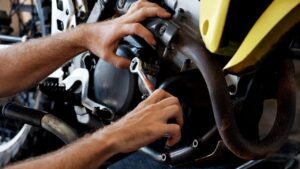
FAQ
1. How to jump-start a motorcycle?
How do you safely jump-start a motorcycle when the battery is dead? Jump-starting involves using either another vehicle’s battery or a portable jump starter to transfer power to the motorcycle’s battery. Always ensure both vehicles are turned off, connect cables in the correct order—positive to positive and negative to ground—and follow proper safety precautions. Once the motorcycle starts, disconnect the cables in reverse order and allow the engine to run to recharge the battery fully.
2. Motorbike jump start?
What is the correct way to perform a motorbike jump start? A motorbike jump start helps get a bike running when the battery is too weak to start the engine. Using jumper cables and a donor vehicle or jump starter, carefully connect the terminals, ensuring the correct polarity. After powering the bike, disconnect safely. For smaller bikes or emergencies, push-starting is also an option if cables or a donor vehicle aren’t available, making this method versatile for riders.
3. Jump-start start motorcycle?
How can you jump-start a motorcycle effectively? Jump-starting a motorcycle requires preparation, the right tools, and safety measures. Position the motorcycle and donor vehicle properly, turn off all electrical components, and attach jumper cables in the proper sequence. Start the donor vehicle, then attempt to start the motorcycle. Once the engine runs, remove cables carefully in reverse order. This method restores power quickly, but repeated jump-starting may indicate the motorcycle battery needs replacement.
4. Jump-starting a motorcycle?
How to jump-start a motorcycle. Jump-starting a motorcycle involves connecting a fully charged battery to a dead one using jumper cables or a portable jump starter. Ensure the ignition is off, cables are properly attached, and polarity is correct. Start the donor vehicle, attempt to start the motorcycle, and then disconnect cables safely. Observing safety precautions, like wearing gloves and avoiding sparks near the battery, How to jump start a motorcycle ensures both rider and motorcycle remain protected.
5. Motorcycle battery jump?
How to jump-start a motorcycle. A motorcycle battery jump transfers power from a charged battery to a depleted one. Always verify the battery type and voltage before attempting, connect positive to positive and negative to ground, and avoid contact between clamps. Start the donor vehicle or jump starter, How to jump start a motorcycle then start the motorcycle. After ignition, disconnect carefully and let the bike run to recharge. Proper handling prevents short circuits, sparks, or permanent battery damage.
6. Jump-start start bike?
How to jump-start a motorcycle. What’s the best way to jump-start a bike when it won’t start? Jump-starting a bike involves connecting its dead battery to a charged battery using jumper cables or a jump starter. Ensure vehicles are stable, ignition is off, and polarity is correct. Start the donor source, attempt ignition, and let the bike run. How to jump-start a motorcycle. For emergencies, push-starting can also work. Following safety guidelines protects the rider and prevents battery or electrical system damage.
7. Jump-start the motorbike?
How to jump-start a motorcycle. Jump-starting a motorbike is a method to get the engine running when the battery is dead. Connect jumper cables or use a portable jump starter, ensuring the correct sequence and polarity. Start the donor source, then the motorbike. Disconnect cables in reverse order and let the engine run to recharge the battery. Push-starting is an alternative if cables aren’t available. Always follow safety steps to avoid sparks or injury. How to jump-start a motorcycle
Conclusion
Jump-starting a motorcycle is a practical skill that can save riders from being stranded due to a dead battery. The process involves understanding the motorcycle battery type, preparing the vehicle, connecting jumper cables correctly, starting the engine, and safely disconnecting the cables. Following each step carefully ensures not only a successful start but also the safety of both the rider and the motorcycle’s electrical system. Whether using a donor vehicle or a portable jump starter, adherence to proper procedures minimizes risks of sparks, short circuits, or battery damage. How to jump-start a motorcycle
While knowing how to jump-start a motorcycle is essential, regular battery maintenance is equally important. Checking electrolyte levels in lead-acid batteries, monitoring voltage, keeping terminals clean, and avoiding deep discharges can extend battery life and prevent frequent jump-starts. Proper care ensures the motorcycle starts reliably, avoids unexpected breakdowns, and maintains optimal performance of electrical components such as headlights, indicators, and the ignition system. How to jump-start a motorcycle
How to jump-start a motorcycle. Despite following all safety precautions, some battery or electrical issues may require professional attention. If a motorcycle repeatedly struggles to start or shows signs of a failing battery, seeking help from a certified mechanic or technician is strongly recommended. Professionals can accurately diagnose problems, replace worn-out batteries, and ensure that the motorcycle’s electrical system is functioning correctly. By combining practical jump-start knowledge, routine maintenance, and professional guidance when needed, riders can enjoy a safer and more dependable riding experience.
Read More>>>>>>> How To Jump Start A Motorcycle


